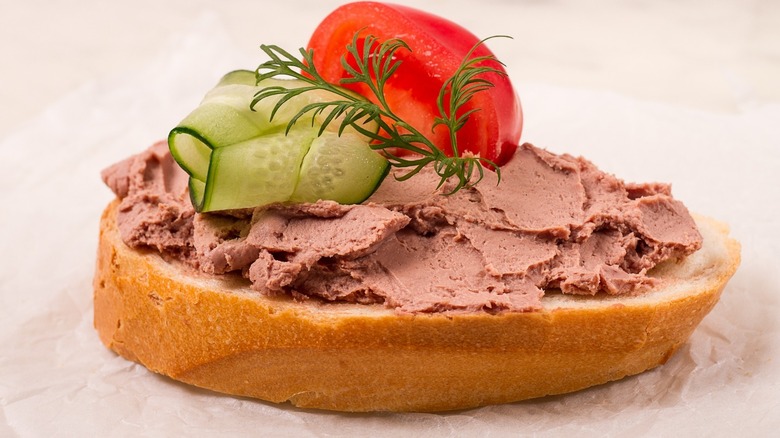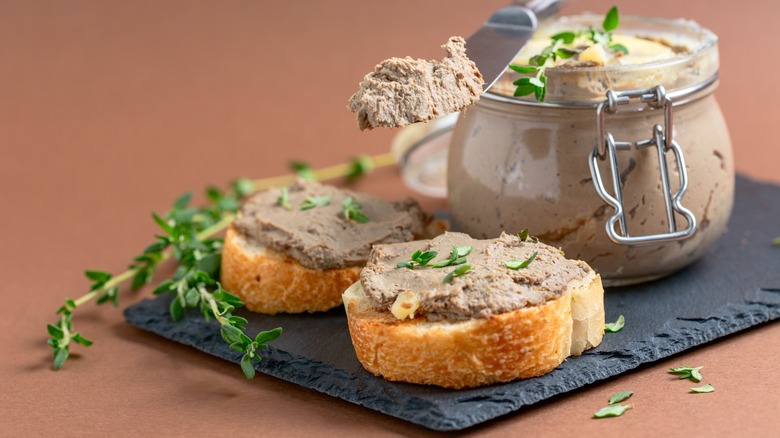The Biggest Difference Between Foie Gras And Pâté
The word pâté immediately conjures up images of an expensive meat paste like foie gras, perhaps spread on a baguette or shared as hors d'oeuvres. However, there is a difference between the French delicacy known as foie gras and a simple pâté.
A type of pâté, Foie gras is the French term for "fat liver," and is made from the fattened livers of ducks and geese. In nature, these migratory birds will gorge themselves to prepare for the yearly migration, fattening their liver to give them an energy boost. The dish was beloved by King Louis XVI and a staple in royal circles in the late 1700s. Pâté de foie gras is a protected "cultural and gastronomic" product of France, according to a law created in January 2006. It's now governed by French law, which requires that goose or duck liver make up 80 percent of pâté de foie gras.
Pâté, or terrine, on the other hand, is more often a humble mix of ground offal and muscle meat, and herbs and spices baked in a small dish, like a fancy meatloaf. There are versions made from pork or sometimes even wild boar, but duck or rabbit isn't uncommon, either. Usually, it's served cold and sometimes studded with dried fruits or nuts. The Polish have their pasztet and the Germans their liverwurst; even an English pork pie can be considered a version of pâté en croûte, or pâté "in a crust."
Pâté is generally seen as more acceptable to consume than foie gras
Another difference between foie gras and pâté is the perception of which is acceptable to eat. Pâté is a more acceptable way to enjoy liver since it doesn't come from animals that have been force-fed. A popular option is chicken liver pâté, or "faux gras," made with lentils or mushrooms.
Foie gras is seen by many — including animal rights activists, governments, and the royal family — as unethical due to the force-feeding of the ducks or geese. A much-challenged California ban prohibits the production and sale of foie gras. Meanwhile, the 2019 New York City foie gras ban is in limbo due to a tug-of-war with the state. Overseas, the royal family banned the fancy dish from royal menus. Germany even said no thank you to featuring French foie gras at a food festival in 2011, to the consternation of the French government.
While foie gras may have its defenders and date back to ancient Egypt, pâté is less controversial and is more readily available at grocery stores and markets throughout the U.S. You won't find the same bans for pâté since there isn't an ethical dilemma at its center.

